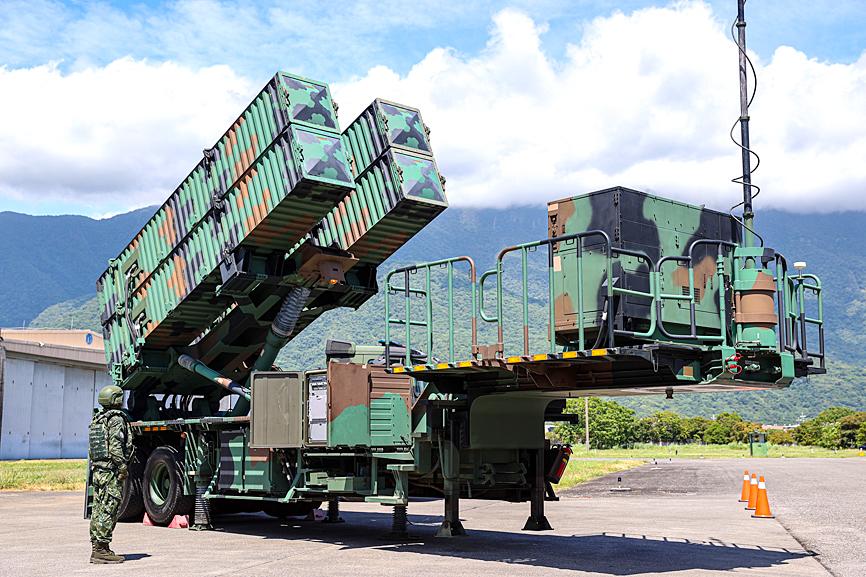The Hsiung Feng III missile project’s former chief engineer, Chang Cheng (張誠), has said that the military needs to extend the altitude of the Tien Kung III air-defense missile to effectively counter any threats from China.
In response to the rising military threat from China, the Ministry of National Defense has taken steps to increase missile production, raising production of the Tien Kung III missile from 48 units to 96 units per year, a defense official speaking on condition of anonymity said yesterday.
China’s live-fire missile drills earlier this month showed that the Tien Kung III air-defense missile cannot reach the altitude necessary to intercept some Chinese strikes, Chang wrote on Facebook on Tuesday.
The Chinese People’s Liberation Army (PLA) fired four Dongfeng-17 ballistic missiles into strategically key waters off eastern Taiwan where Taiwanese warships shelter and US forces would travel to counter a Chinese invasion, Chang said.
The missiles likely flew over Taiwan proper at an altitude of about 100km, the height they should reach when traveling the last one-third of their effective range, while the extended-range Tien Kung III has a service ceiling of 70km, he said.
This means the country’s premier air defense missile is incapable of shooting down Chinese ballistic missiles, he said.
“To intercept the PLA’s guided missiles at altitudes of 100km or more, the Chungshan Institute [of Science and Technology] would have to create a system capable of reaching 150km, similar to the US’ Terminal High Altitude Area Defense system,” Chang said.
The navy and the institute should join forces to design surface warships with an advanced air defense capability, mirroring that of the US Navy’s Advanced Electronic Guidance and Instrumentation System (AEGIS), he said.
AEGIS-equipped ships can defend a fleet from ballistic missiles by utilizing Standard Missile-2s and Standard Missile-6s, which are capable of defeating ballistic missiles, Chang said, adding that Hai Kung III missiles, which are close to being completed by the institute, could be used on such a warship.
A vertical launch system should also be built so that the theoretical warships could fire Hsiung Sheng missiles that have been designed for naval use, he said.
The anonymous defense official yesterday said that the extended-range Tien Kung III’s maximum interception height is probably 45km.
The missile launches seen on Thursday near the institute’s Jioupeng Military Base in Pingtung County’s Manjhou Township (滿州) were likely a test in which two extended-range missiles were fired at a simulated ballistic missile, the official said.
The military plans to establish 17 launch sites for the Tien Kung III missile before 2026 as part of Taiwan’s “porcupine” defense strategy, they said, adding that similar measures are being taken for anti-ship missiles.
The porcupine strategy refers to an asymmetric strategy that aims to make a territory difficult and costly to invade, which in part involves using anti-aircraft, anti-ship and anti-tank missiles against an opposing force’s large and expensive weapons platforms.
Source: Taipei Times - 2022/08/22









